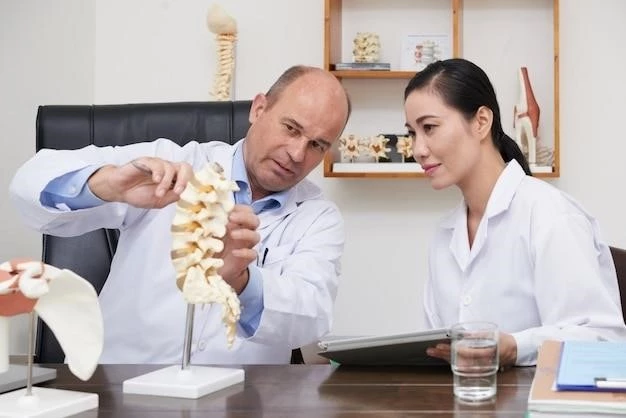Understanding the basics of Acroosteolysis Neurogenic is crucial to grasp its complexities and implications on the body. Let’s dive into the details!

Acroosteolysis Neurogenic is a condition where bone tissue degenerates in the hands and feet due to nerve damage. This can lead to deformities, pain, and loss of function. Understanding the impact on the body is crucial to managing the condition effectively. Nerve dysfunction disrupts the bone’s blood supply, causing bone resorption and structural changes. Patients may experience numbness, tingling, weakness, and difficulty with fine motor skills. Early diagnosis and intervention are key in preventing complications and improving quality of life. Consult a healthcare professional for personalized guidance.
Identifying Common Causes and Risk Factors
Several factors can contribute to Acroosteolysis Neurogenic, including nerve trauma, autoimmune diseases, vascular disorders, and repetitive microtrauma. Individuals with diabetes, Raynaud’s syndrome, and certain connective tissue disorders are at higher risk. Understanding these risk factors can help in early detection and management. It’s important to consult a healthcare provider for a comprehensive evaluation if you experience symptoms or fall into any high-risk categories. Proactive measures can assist in minimizing the impact of Acroosteolysis Neurogenic on your overall well-being.
Recognizing Symptoms and Understanding Clinical Manifestations
Acroosteolysis Neurogenic may present with symptoms such as bone resorption, joint deformities, neuropathic pain, and skin changes. Clinical manifestations include digital ulcerations, contractures, and decreased sensation in the affected areas. Early signs like fingertip breakdown or discoloration should not be ignored. If you experience these symptoms, seek prompt medical evaluation to prevent complications. Understanding the signs and symptoms can lead to early intervention and better outcomes. Your healthcare provider can guide you on appropriate management strategies tailored to your individual needs.
Exploring Diagnostic Methods and Imaging Techniques
Diagnosing Acroosteolysis Neurogenic involves a thorough clinical evaluation, including medical history review and physical examination. Imaging studies like X-rays, CT scans, or MRI scans can help visualize bone changes and nerve involvement. Nerve conduction studies may assess nerve damage. Blood tests can rule out underlying conditions. Prompt and accurate diagnosis is crucial for appropriate treatment planning and management. Collaborate closely with healthcare professionals to ensure a comprehensive diagnostic approach tailored to your specific needs. Stay informed about the diagnostic process to actively participate in your care and well-being.
Evaluating Different Treatment Approaches and Therapies
Various treatment options for Acroosteolysis Neurogenic include physical therapy to improve range of motion, pain management strategies, orthotic devices for support, and medications to address underlying conditions. In severe cases, surgical interventions like nerve decompression or joint fusion may be necessary. Collaborate with a multidisciplinary healthcare team to determine the most appropriate treatment plan for your specific needs. Engage in regular follow-ups and adhere to the recommended therapies to optimize outcomes. Stay proactive in discussing any concerns or evolving symptoms with your healthcare provider for ongoing care and support.
Understanding Prognostic Factors and Potential Complications
Prognosis of Acroosteolysis Neurogenic varies based on individual factors and disease severity. Long-term outcomes can be influenced by timely intervention, adherence to treatment plans, and overall health. Complications may include chronic pain, joint deformities, functional limitations, and decreased quality of life. Regular monitoring and proactive management are crucial in preventing potential complications. Stay informed about your condition, follow recommended therapies, and maintain open communication with your healthcare team. Understanding prognostic factors and potential complications can empower you to take control of your health and well-being.
Highlighting Recent Developments and Breakthroughs in Research
Ongoing research in Acroosteolysis Neurogenic is focused on enhancing diagnostic approaches, exploring novel treatment modalities, and understanding the disease mechanisms at a deeper level. Advancements in imaging technologies, genetic studies, and targeted therapies show promise for personalized management strategies. Clinical trials and collaborative efforts aim to improve outcomes and quality of life for individuals with this condition. Stay informed about the latest research findings and consider participating in research initiatives to contribute to the advancement of knowledge in Acroosteolysis Neurogenic. Consult with healthcare professionals for insights on incorporating cutting-edge developments into your care plan.
Advising on Lifestyle Modifications and Coping Mechanisms for Better Quality of Life
Managing Acroosteolysis Neurogenic involves lifestyle adjustments and coping strategies to enhance well-being. Maintain a balanced diet rich in calcium and vitamin D to support bone health. Regular exercise tailored to your abilities can improve flexibility and strength. Seek emotional support from family, friends, or support groups to cope with challenges. Mindfulness techniques, relaxation exercises, and stress management can aid in reducing pain and improving overall quality of life. Prioritize self-care and listen to your body’s needs. Open communication with healthcare providers and a positive mindset are essential in navigating the complexities of Acroosteolysis Neurogenic.
